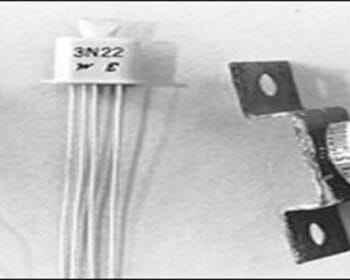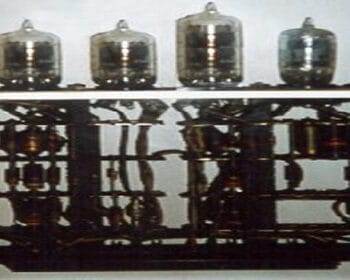Category: Inventions
Kilby Integrated Circuit
Transistors had become commonplace in everything from radios to phones to computers, and now manufacturers wanted something even better. Sure, transistors were smaller than vacuum tubes, but for some of the newest electronics, they weren’t small enough. One day in late July, Jack Kilby was sitting alone at Texas Instruments….
Junction Transistor
Diode Logic
Diode Logic makes use of the fact that the electronic device known as a diode will conduct an electrical current in one direction, but not in the other. In this manner, the diode acts as an electronic switch.
Williams Tube
The Bit
Vacuum Tubes
Semiconductors

Pioneered with the advent of the first transistor using semiconductor materials at Bell Labs by John Bardeen and Walter Brattain, semiconductors have had a monumental impact on our society. You find them at the heart of microprocessor chips as well as transistors. Anything that’s computerized or uses radio waves depends…
Point Contact Resistor
The first transistor was about half an inch high. That’s mammoth by today’s standards, when 7 million transistors can fit on a single computer chip. It was nevertheless an amazing piece of technology. It was built by Walter Brattain. Before Brattain started, John Bardeen told him that they would need…
Kilby Integrated Circuit
Transistors had become commonplace in everything from radios to phones to computers, and now manufacturers wanted something even better. Sure, transistors were smaller than vacuum tubes, but for some of the newest electronics, they weren’t small enough. One day in late July, Jack Kilby was sitting alone at Texas Instruments….
Junction Transistor
Diode Logic
Diode Logic makes use of the fact that the electronic device known as a diode will conduct an electrical current in one direction, but not in the other. In this manner, the diode acts as an electronic switch.
Williams Tube
The Bit
Vacuum Tubes
Semiconductors
Pioneered with the advent of the first transistor using semiconductor materials at Bell Labs by John Bardeen and Walter Brattain, semiconductors have had a monumental impact on our society. You find them at the heart of microprocessor chips as well as transistors. Anything that’s computerized or uses radio waves depends…
Point Contact Resistor
The first transistor was about half an inch high. That’s mammoth by today’s standards, when 7 million transistors can fit on a single computer chip. It was nevertheless an amazing piece of technology. It was built by Walter Brattain. Before Brattain started, John Bardeen told him that they would need…


